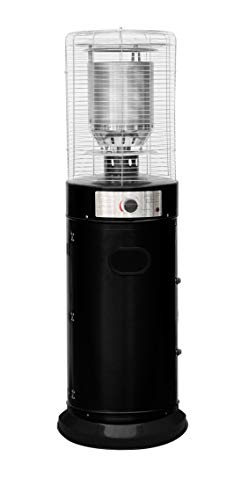Buying Gas Radiant Heaters: A Comprehensive Guide
Gas radiant heaters have acquired popularity in the last few years for their performance and capability to provide instantaneous warmth. As just click the following post and companies try to find ways to keep their areas comfy, understanding the functions, advantages, and considerations when purchasing these heating systems can be really useful. This post explores the complexities of gas radiant heaters, helping potential purchasers in making informed choices.
What are Gas Radiant Heaters?
Gas radiant heaters are gadgets that make use of propane or natural gas to produce heat directly into a space. Rather than heating the air, they warm items and people in their vicinity, providing convenience quicker and effectively. These heaters are popular for both indoor and outdoor settings due to their flexibility and efficiency.
Key Features of Gas Radiant Heaters
- Direct Heating: Unlike conventional heaters that warm the air, gas radiant heaters provide direct warmth, making them an efficient option for quickly heating up spaces.
- Portability: Many designs are offered as portable systems, enabling them to be easily moved from one area to another.
- Fuel Variety: Gas radiant heaters can be powered by gas or propane, providing users flexibility based upon accessibility and preference.
- Adjustable Settings: Most gas radiant heaters come with adjustable heat settings, allowing users to customize the level of warmth based on their requirements.
Benefits of Gas Radiant Heaters
- Energy Efficiency: These heaters transform gas into heat effectively, leading to lower utility costs compared to electric heaters.
- Quick Heating: Radiant heat is felt nearly immediately, making these heaters perfect for unexpected temperature drops.
- Low Maintenance: Gas radiant heaters typically require less upkeep than electrical models, making them a hassle-free choice.
- Ecologically Friendly: When powered by tidy natural gas, these heaters can be a more environmentally sustainable choice compared to other heating approaches.
Types of Gas Radiant Heaters
When it comes to choosing a gas radiant heater, it's important to understand the different types offered. Below are the most common options:
- Indoor Gas Radiant Heaters: Designed for indoor spaces, these heaters are generally vented or unvented and typically featured built-in security features.
- Outdoor Gas Radiant Heaters: Commonly used in patios or outdoor dining areas, these heaters are developed to stand up to the elements.
- Wall-Mounted Gas Radiant Heaters: A space-saving option, these systems are perfect for smaller spaces and can be outfitted with various heat outputs depending on the location's requirements.
- Freestanding Gas Radiant Heaters: These portable models can be utilized in different locations, best for those who require flexibility.
Buying Guide: How to Choose the Right Gas Radiant Heater
When buying a gas radiant heater, numerous factors need to be thought about to guarantee you select the ideal design for your space:
1. Heating Capacity
- Determined in BTUs (British Thermal Units), the heater's capability determines just how much location it can effectively warm. Buyers should evaluate their specific needs based on room size.
| Room Size (sq feet) | Recommended BTUs (for Gas Radiant Heaters) |
|---|---|
| 100 - 200 | 5,000 - 10,000 BTUs |
| 200 - 400 | 10,000 - 20,000 BTUs |
| 400 - 600 | 20,000 - 30,000 BTUs |
| 600 - 800 | 30,000+ BTUs |
2. Type of Gas
- Think about whether you will be utilizing propane or gas, as different heaters cater to various fuel types.
3. Safety Features
- Search for models geared up with security functions such as automated shut-off valves, tip-over protection, and oxygen depletion sensors.
4. Installation Requirements
- Some heaters might need expert installation, especially vented designs. Make visit website to think about the costs and requirements associated with installation.
5. Portability
- If versatility is important, consider portable models that can be quickly moved from one place to another.
Installation and Maintenance
Gas radiant heaters are generally uncomplicated to set up, specifically portable designs. However, vented options may require professional installation to ensure they fulfill regional safety codes.
Upkeep usually involves:
- Regular cleaning to prevent dust accumulation.
- Inspecting gas connections and fittings for leaks.
- Making sure security functions are practical.
Suggestion: Regular checks around the unit can assist extend its life expectancy and keep security.
Regularly Asked Questions (FAQs)
Q1: Are gas radiant heaters safe for indoor use?A1: Yes
, as long as they are properly vented and geared up with essential security features, they can be securely utilized inside your home.
Q2: Can gas radiant heaters be utilized in enclosed spaces?A2: Unvented gas heaters can pose threats in enclosed areas due to potential suffocation or carbon monoxide accumulation. Constantly ensure sufficient ventilation. Q3: How do I know what size heater I need?A3: The appropriate size depends on the area you intend to heat. Refer to the BTU chart
above to determine your requirements. Outdoor Heating Products : What is the difference in between propane and gas heaters?A4: The primary difference depends on their energy source
; propane is delivered through tanks, while gas is normally piped into homes. Q5: How can I optimize efficiency?A5: Ensure the heater is appropriately sized for your space, maintain it regularly, and think about using it in combination
with other heating methods for optimum comfort. Gas radiant heaters can be a terrific addition to any home or business, providing energy-efficient and quick heating solutions. By understanding the various types, functions, and factors to consider
when acquiring, buyers can make informed choices that meet their heating needs. With the right option, these heaters offer comfort, reliability, and a welcoming environment during cooler seasons.

